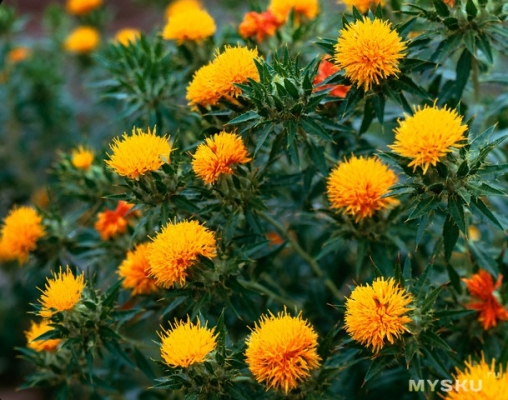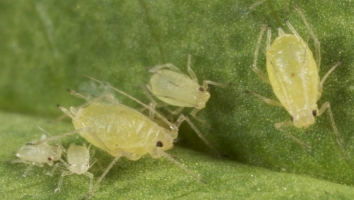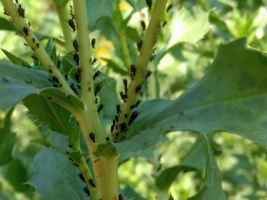General Information
Safflower is commonly known as "khusambha, kusum" are oldest cultivated oilseed which contain 24-36% oil. Safflower is largely used for cooking purposes. Its decorticated cake is utilized for feeding cattle.

Safflower is commonly known as "khusambha, kusum" are oldest cultivated oilseed which contain 24-36% oil. Safflower is largely used for cooking purposes. Its decorticated cake is utilized for feeding cattle.
















Safflower is grown on maximum variety of soil. It is well grown in drained sandy loam soil and the soil which is rich in organic matter.
DSH-129, MKH-11, Parbhani Kusuma(PBNS-12), NARI-NH-1 (PH- 6)
Other States Variety
Phulekusum, NARI-6.
NARI-H-15: It’s a hybrid formed at Phaltan (Maharashtra), released in 2005 for irrigated areas for the entire country with 28% oil. It is tolerant to aphids.
To bring soil to the fine tilth stage land should be ploughed several times so that all weeds are removed which would be present their previously. Low-lying land must be eluded as water logged situation is liable to destroy by wilts as well as root rots.
Time of sowing
Optimum time for sowing seeds is last week of October to first week of November.
Spacing
Use Plant to Plant spacing of 15 cm and row to row spacing of 45 cm.
Sowing Depth
Sow seeds at depth of 5-7 cm.
Method of sowing
Sowing is done through drilling method.
Seed rate
For sowing, use seed rate of 6 kg for one acre.
Seed Treatment
The seeds must be treated with Captan or Agrosan GN @ 3 gm/kg of seed before sowing. Healthy and disease free seeds must be soaked in water for overnight for better germination.
Safflower follows Kharif crop like mash, fodder, moong, maize etc.
Fertilizer Requirement (kg/acre)
| UREA | SSP | MOP |
| 35 | On soil test results | On soil test results |
Nutrient Value (kg/acre)
| NITROGEN | PHOSPHORUS | POTASH |
| 16 | - | - |
Apply 16 kg N (35 kg urea) per acre. If soil nutrient is low apply phosphorus and all these fertilizers should be drilled before sowing.
Safflower is extremely vulnerable to weed while rosette phase which ends around 25-30 days in deccan areas as well as two month or even more in other areas with long term winter. The area must be retained weed-free within this crucial period via regular weeding with intercultural 1-2 times 25-30 rather 45-50 days after sowing. Pre-plant use of Trifluralin @ 200 gm/acre or EPTC@200 gm/acre or pre-emergence use of Atrazine @ 800 gm/acre or Alachlor @600 gm/acre is used for efficient weed regulation in safflower.
This crop can be grown even in areas where irrigation is not required if soil is moist as seasonal varies. Water is necessary during the flowering stage so once irrigation is required in 30 days for better yield. For area where soil is less moist, apply one heavy pre- sowing irrigation, it will be beneficial for better growth.

Green peach aphid (Myzus persicae): Its appearance is like burnt on the plant.

Safflower aphid: These are seen on tender shoot, leaves as well as stem it make the plant look weak and some areas are dried up.
Control: Spray 100 ml Chlorpyriphos 20EC in 100 ltr of water/acre. If required can be repeated even after 15 days.
Wilt and heat rot: In this plant turn yellow later with brown and finally die. Sclerotic are fungus type which is seen on the crown, adjoin root areas, and stem.
Control: Use Healthy and disease free seeds. Soil should not be piled up around stem in rainy season.
Safflower matures in 150-180 days. Harvesting should be done in mid-May when the flowers turn in yellow brown in color.
1.Punjab Agricultural University Ludhiana
2.Department of Agriculture
3.Indian Agricultural Research Instittute, New Delhi
4.Indian Institute of Wheat and Barley Research
5.Ministry of Agriculture & Farmers Welfare
You have successfully login.
Your email and password is incorrect!